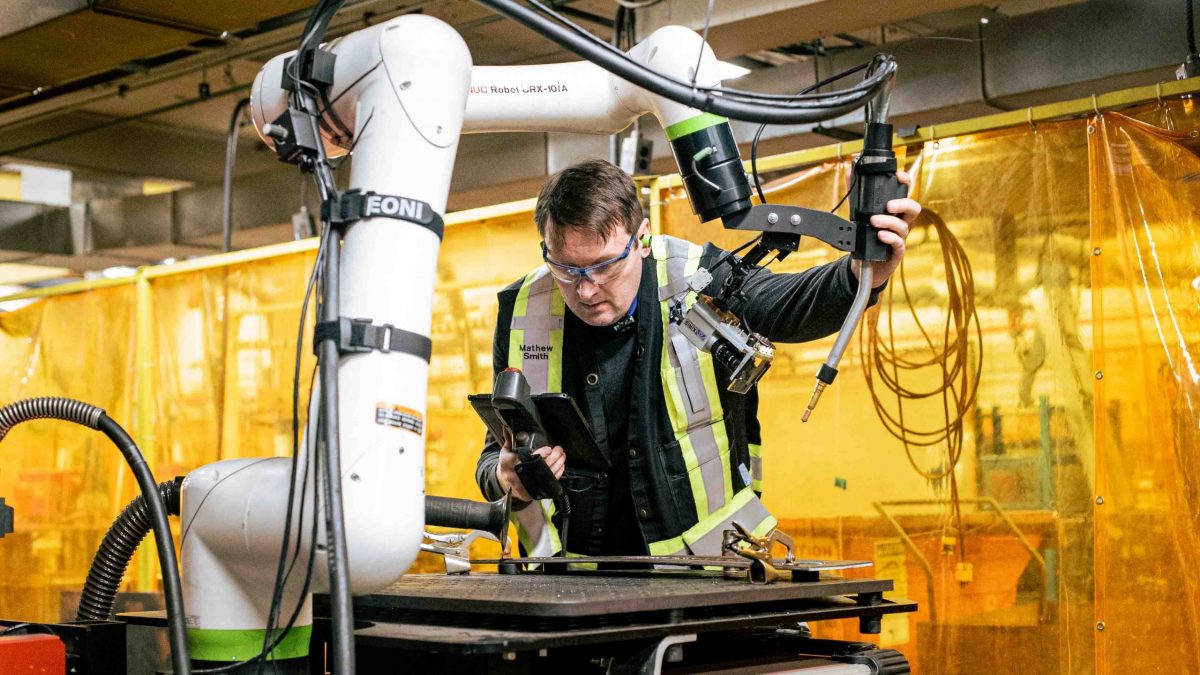As the largest trades training provider in Western Canada, BCIT is at the forefront of embracing technology to enhance efficiency in skilled trades. One of its latest efforts involve the incorporation of “cobots” into the Welding and Metal Fabrication programs. A collaborative robot, or cobot, is a type of lightweight robot arm that can safely share workspaces with humans, while performing automated tasks without the use of complex programming codes.
Mathew Smith, Director of the Centre for Welding Technologies and Metallurgy, says the cobot shows students how easy it is to implement welding automation in their everyday work.
“Students don’t need to know anything about computer programming to be able to set the system up. Learning how to use this technology will allow them to go out into the work environment and know where and how a collaborative robot could be used,” Mathew explains.
What makes a cobot unique
Cobots are commonly used to support manufacturing and assembly tasks. The lower cost, smaller size, and ease of use without specialized programming expertise make the cobot more favourable than traditional robots. The main difference between a traditional robot and a cobot is that the latter can detect human presence and adjust its behaviour accordingly.
“If you’re working around a cobot, it will detect you and stop if you get on its way – making it safer to work around, whereas traditional robots don’t work that way because they have already been programmed to perform a specific task regardless of the circumstance,” explains Mathew.
Students will be able to automate common tasks including the welding of pipe and structural joints, including groove and fillet welds. A camera has also been mounted on the robot arm to allow students to monitor the welding in real time.
The cobot will be used to supplement the training already provided in these programs and will not replace the learning of critical hand skills required to become a certified welder in British Columbia. For example, faculty in metal trades programs are looking to introduce a project where students will build a lifting lug using as much automation as possible. The components of the lug will be cut from steel using an automated plasma table that the students will program. The lug will then be welded together using the cobot.
“Currently, only a minimal amount of the welding work carried out in BC incorporates the use of automation,” explains Mathew. “Access and knowledge in using cobots to support the work of welders has the potential to make BC’s manufacturing environment more competitive.”
He adds, “Workers will be able to use cobots to perform simple and repetitive welding tasks, freeing up time to work on more complex welding problems. This will allow BC to expand its manufacturing base, which will ultimately create more jobs as we become able to onshore manufacturing that is currently completed outside of the country.”
Have you subscribed? Sign-up to receive the latest news on BCIT.
